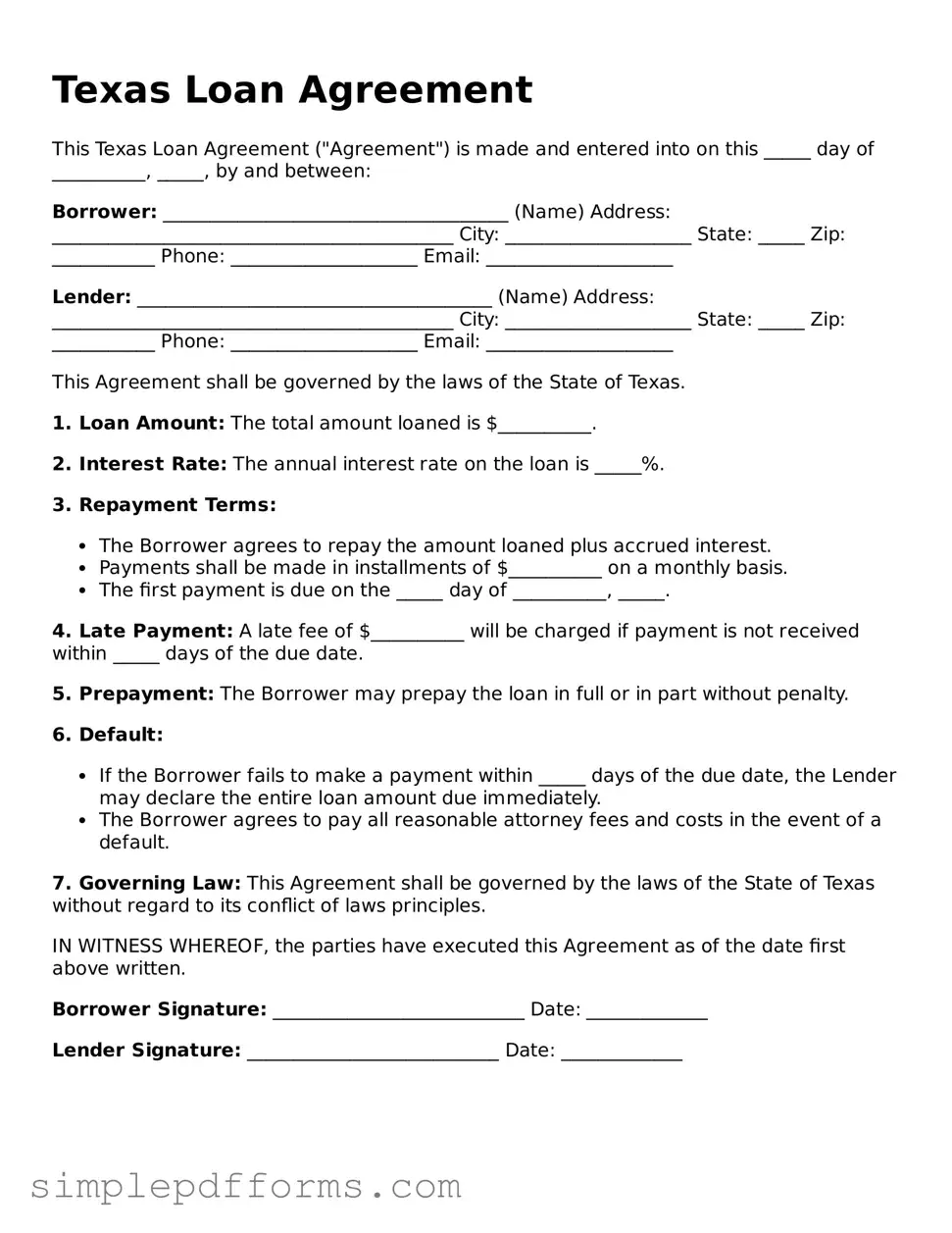Texas Loan Agreement
This Texas Loan Agreement ("Agreement") is made and entered into on this _____ day of __________, _____, by and between:
Borrower: _____________________________________ (Name)
Address: ___________________________________________
City: ____________________ State: _____ Zip: ___________
Phone: ____________________ Email: ____________________
Lender: ______________________________________ (Name)
Address: ___________________________________________
City: ____________________ State: _____ Zip: ___________
Phone: ____________________ Email: ____________________
This Agreement shall be governed by the laws of the State of Texas.
1. Loan Amount: The total amount loaned is $__________.
2. Interest Rate: The annual interest rate on the loan is _____%.
3. Repayment Terms:
- The Borrower agrees to repay the amount loaned plus accrued interest.
- Payments shall be made in installments of $__________ on a monthly basis.
- The first payment is due on the _____ day of __________, _____.
4. Late Payment: A late fee of $__________ will be charged if payment is not received within _____ days of the due date.
5. Prepayment: The Borrower may prepay the loan in full or in part without penalty.
6. Default:
- If the Borrower fails to make a payment within _____ days of the due date, the Lender may declare the entire loan amount due immediately.
- The Borrower agrees to pay all reasonable attorney fees and costs in the event of a default.
7. Governing Law: This Agreement shall be governed by the laws of the State of Texas without regard to its conflict of laws principles.
IN WITNESS WHEREOF, the parties have executed this Agreement as of the date first above written.
Borrower Signature: ___________________________ Date: _____________
Lender Signature: ___________________________ Date: _____________
